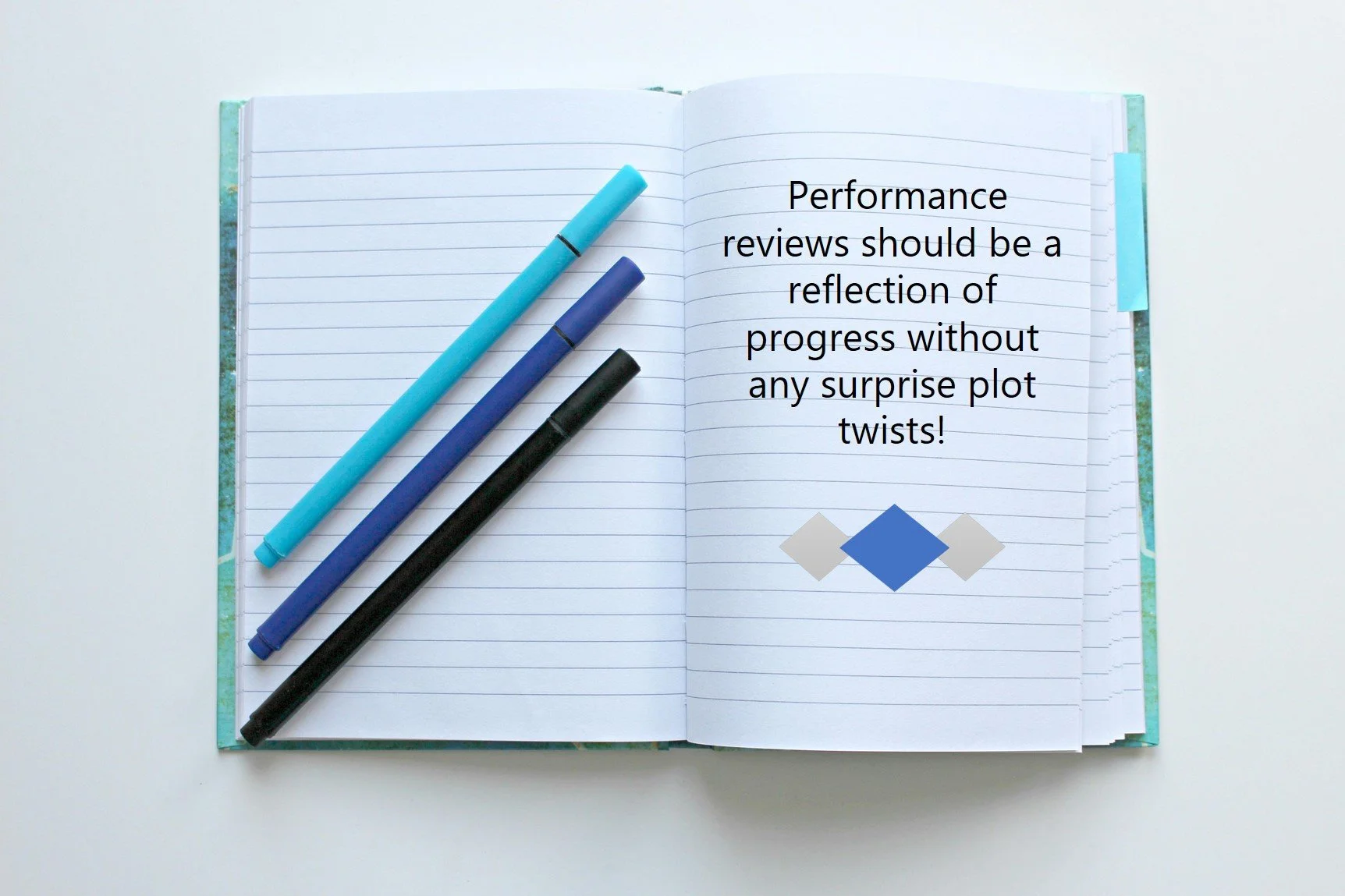Preparing for Performance Review Season: A Leader’s Guide
Ah, performance review season—the time when managers don their coaching hats and employees brace themselves for feedback. While reviewing top performers is a breeze, addressing tougher conversations requires preparation and finesse. Handling performance conversations with empathy and clarity can transform into opportunities for growth and improvement.
Collect Data - Gather data from various sources to ensure a well-rounded review including self-assessments from your team members, peer feedback from colleagues who work closely with them, and quantitative data to support your evaluation. Also, consider collaborating with peer leaders for a high-level review of the team member performance across the organization for a sanity check.
Prepare Thoroughly - Before the meeting, gather all relevant information and examples to support your points. Your feedback should be specific, actionable, and balanced. Highlight strengths and achievements while also addressing areas for improvement. Use the SBI (Situation-Behavior-Impact) model to structure your feedback:
Situation: Describe the context.
Behavior: Explain the specific behavior.
Impact: Discuss the impact of the behavior.
Create a Positive Environment - Performance reviews can be stressful—schedule reviews in a comfortable, private setting. The conversation can be virtual, but only if both parties are on camera so non-verbal cues can be shared.
Communicate Clearly and Kindly
Be Direct but Kind: Clearly state the issue without being harsh or judgmental.
Choose Your Words Wisely: Use non-threatening language. Instead of saying, “You’re wrong,” try, “Let’s explore this further.” It’s not about winning an argument; it’s about finding solutions.
Focus on Behavior, Not Personality: Address specific behaviors rather than making it about the person. This helps avoid defensiveness and keeps the conversation constructive.
Be Curious, Not Furious: If you notice defensiveness, resist the urge to match it with your frustration. Instead, ask questions: “What’s behind this reaction?” or “Help me understand your perspective”. Read the “Be A Curious Leader” article for more.
Listen Actively - Give the employee a chance to share their perspective. Listen without interrupting and acknowledge their feelings and viewpoints. This can help build trust and understanding.
Collaborate on Solutions - Work together to identify actionable steps to address the issue. Encourage the employee to contribute ideas for improvement, which can increase their commitment to making changes.
Maintain Ongoing Conversations -Waiting until mid-year or year-end performance reviews to discuss progress and provide feedback can lead to unnecessary surprises (and bust morale!), especially when there may be financial impacts involved. Don’t blindside your employees. These conversations should be taking place throughout the year to monitor progress and provide ongoing feedback.
Schedule regular follow-up meetings to monitor progress, address any challenges, and celebrate achievements timelier. Not only does this ensure accountability but creates a supportive and growth-oriented environment.
Reflect and Improve - We give this advice often – reflect so you can improve! Keep the growth mindset! After the review season, take time to reflect on the process. Gather feedback from your team on what worked well and what could be improved. Use this information to enhance future performance reviews.
Handling difficult conversations with empathy and clarity can transform into opportunities for growth and improvement. By preparing thoroughly, communicating compassionately, and collaborating on solutions, leaders can navigate these challenges effectively and support their team members’ development.
